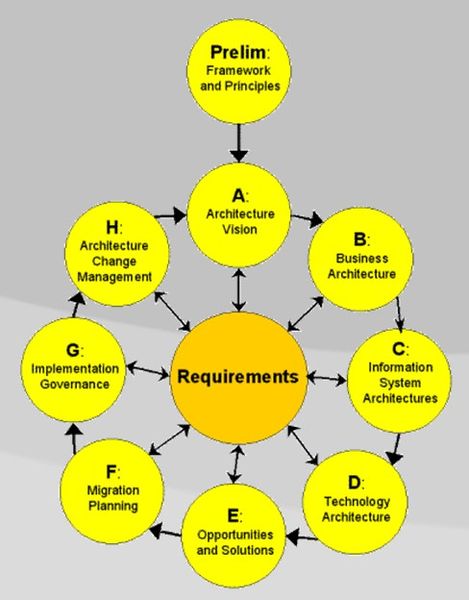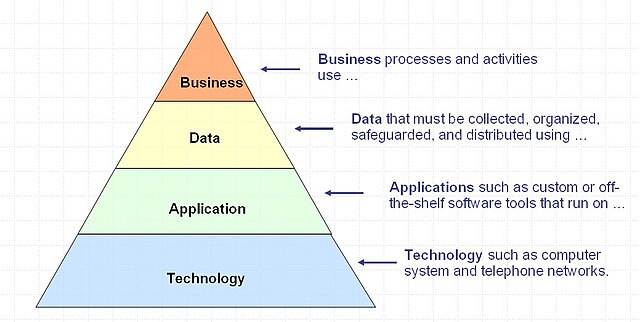The Open Group Architecture Framework
The Open Group Architecture Framework (TOGAF) is the most used framework for enterprise architecture as of 2020 that provides an approach for designing, planning, implementing, and governing an enterprise information technology architecture. TOGAF is a high-level approach to design. It is typically modeled at four levels: Business, Application, Data, and Technology. It relies heavily on modularization, standardization, and already existing, proven technologies and products.
Structure of the TOGAF Architecture Development Method (ADM).
DoD Standards-Based Architecture Planning Process in TAFIM.
Enterprise architecture framework
An enterprise architecture framework defines how to create and use an enterprise architecture. An architecture framework provides principles and practices for creating and using the architecture description of a system. It structures architects' thinking by dividing the architecture description into domains, layers, or views, and offers models – typically matrices and diagrams – for documenting each view. This allows for making systemic design decisions on all the components of the system and making long-term decisions around new design requirements, sustainability, and support.
NIST Enterprise Architecture Model initiated in 1989, one of the earliest frameworks for enterprise architecture.
Overview of Enterprise Architecture Frameworks evolution (1987–2003). On the left: The Zachman Framework 1987, NIST Enterprise Architecture 1989, EAP 1992, TISAF 1997, FEAF 1999 and TEAF 2000. On the right: TAFIM influenced by POSIX, JTA, JTAA, TOGAF 1995, DoD TRM and C4ISR 1996, and DoDAF 2003.
Layers of the enterprise architecture.
Example of the federal enterprise architecture, which has defined five architectural layers.






